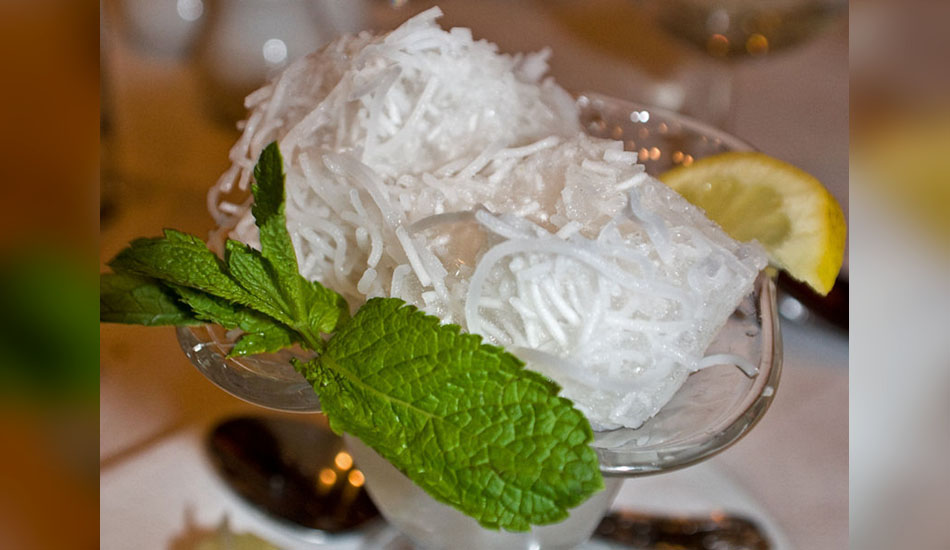For people in Iran, Faloodeh holds a special place — it is arguably their favorite dessert. Created during the time of ancient Persia, Faloodeh consists of rice noodles mixed with rose water and lime. If you ever visit Iran, you will find that most ice cream shops have two traditional desserts on their menu — one is saffron ice cream and the other will be Faloodeh.
“Faloodeh was the first frozen dessert ever made — dating from around 400 BC — and that it was invented largely by accident, when flavoring syrups were spilled on snow, and people realized that they could be transformed into a delicious treat… Faloodeh is native to the city of Shiraz and is often called Shirazi Faloodeh,” according to Bastani Tehran.
The recipe for Faloodeh
To prepare Faloodeh, you will need 1 cup granulated sugar, ½ cup lime juice, 4 ounces of thin rice vermicelli or rice noodles, 2 tablespoons of rose water, sea salt, and some lime wedges for serving. First, pour ½ cup of water in a pan and heat it at a low temperature. Add in half the amount of sugar and let it dissolve into the water fully. Now add 1/8 teaspoon of salt and the remaining sugar. Keep stirring the mixture. Once everything has mixed well, take the pan off the stove and let the mixture cool down.

Next, stir together the cooled mixture, 4 cups of water, rose water, and lime juice in a bowl. Place the bowl in the freezer and wait until crystals start forming at the edges of the mixture. This should take about 1 hour. In the meantime, boil 4 quarts of water in a pot and add in the rice vermicelli/noodles. Once cooked well, take the vermicelli out, drain it, and rinse with cold water. Using a knife, cut down the vermicelli into small, 1-inch pieces.
Stir the cut vermicelli into the frozen syrup mixture. Make sure that the syrup has started to freeze before you add in the vermicelli or else the vermicelli will sink to the bottom. Over the next several hours, scrape off the granita to prevent icy chunks from developing. The mixture should have a consistency that is airy and light, while the vermicelli needs to be crunchy. When you think the mixture is ready, you can serve the Faloodeh with some lime wedges. You can also add in some cherries, pomegranate seeds, and fresh mint sprigs on top.
Indian variation
India has several variations of Faloodeh, which are called Falooda. Here is the recipe for a basic version of this Indian variation. First, you have to soak ½ tablespoon of sweet basil seeds in water. Let the seeds absorb water for about 30 minutes, by the end of which they should look gelatinous. Strain out the excess water and set the seeds aside. In a pot, heat some water, add in 5 tablespoons of vermicelli, and cook until it becomes chewy. Rinse the vermicelli in cold water and set aside.

Take some cashews, pistachios, and almonds and chop them into tiny pieces; mix this up with some raisins. In a serving glass, add about 2 tablespoons of rose syrup. Next, add 2 tablespoons of the gelatinous seeds. Put in 3 tablespoons of vermicelli. Now, slowly pour 1 cup of chilled milk. Make sure that the milk does not mix in with the seeds or rose syrup. Add a scoop of vanilla or mango ice cream on top. Finish off the dish by topping it off with the dry fruit mixture. Serve it immediately.








